KieranTimberlake's U.S. Embassy in London celebrates groundbreaking
By Bustler Editors|
Wednesday, Nov 13, 2013
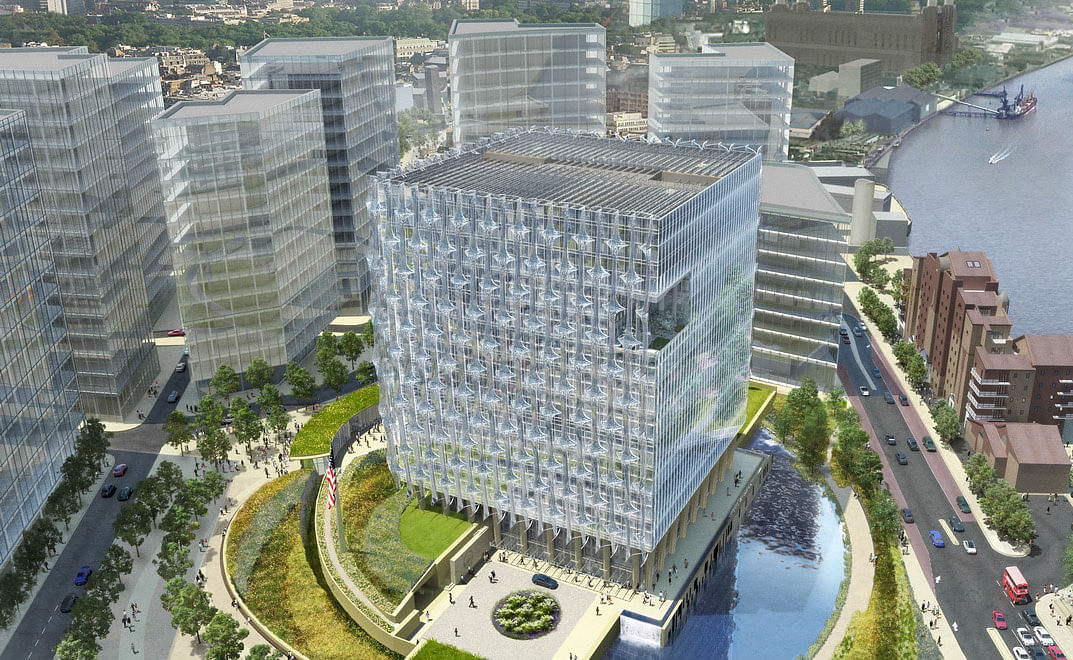
Related
The U.S. Department of State - Bureau of Overseas Buildings Operations announced the groundbreaking of the KieranTimberlake-designed U.S. Embassy in London on Nov. 13. KieranTimberlake of Philadelphia, Pennsylvania was named as the project architect after winning the Department of State competition back in 2010.
Located in a 4.9-acre site in Nine Elms near the Houses of Parliament, some of the many features of the building will include a chancery, a consular section, support spaces, a U.S. Marine residence, access pavilions, sustainable technologies, and an art collection from U.S. and U.K. contemporary artists.
Completion is expected in 2017.
Have a look at some project images below.
From the Department of State Fact Sheet:
"Design & Landscape
The design places the Embassy building at the center of the Nine Elms site and develops the surrounding area into an urban park that honors the English tradition of urban parks and gardens as the context for civic buildings. The paving about and within the Embassy site utilizes the familiar limestone in many London walks and parks. London Plane trees provide shade and form at the perimeter and along Nine Elms Lane, as well as the walk to the south that connects the site to Vauxhall Station, the nearest Tube stop."
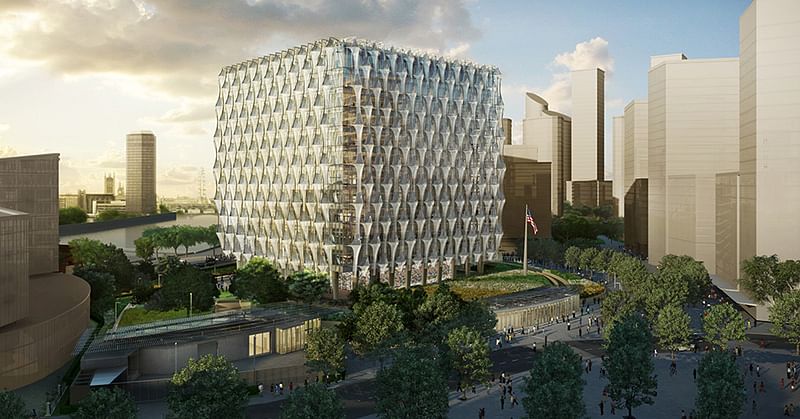
"Trees near the pond are to be North American species, such as the Weeping Willow and the Bald Cypress. Others, while native to North America, were long ago brought to England are now common to the English landscape. The form of the landscape is expressed through grading walks and plantings in a way that simultaneously opens out to the city beyond, spirals inward as it envelops, and then moves up into and through the Embassy building. The chancery is a pure, simple and transparent crystalline cubic form atop a colonnade.

"As pure geometry, the cube represents an open and inviting presence on the London cityscape. The design is a hallmark of the many innovations in the project – a landscape without any visible barriers, fences or walls; opening of the inside space to the outside; solar harvesting and sun shading in the design of the crystal-like ethylene-tetrafluroethylene (ETFE) scrim.
A four-sided colonnade forms the base of the building. Through both custom and the openness and accessibility of their sheltering form, colonnades have long evoked the architecture of diplomacy."

"Six interior gardens create spaces of meeting and repose that also create a vertical path up and throughthe building. The interior design features high performance and highly flexible work spaces. Public events can be held in a multi-level series of spaces that adjoin an event lawn, all with views over the pond and garden."
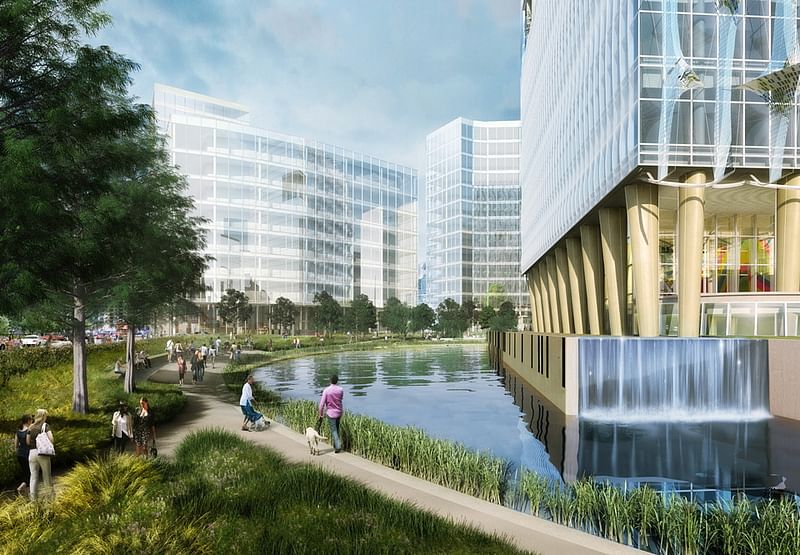
"Sustainability
"The design team established sustainability aspirations that include carbon neutrality, a self-sufficient water system, optimization of daylighting and occupant control of systems, as well as minimum goals for certification at Leadership in Energy and Environmental Design (LEED®) Gold and BREEAM (Building Research Establishment Environmental Assessment Method) Excellent."
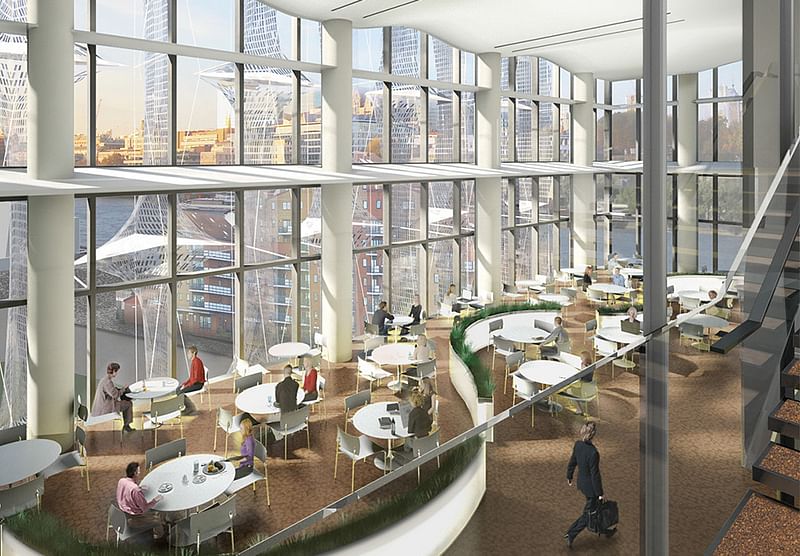
"Water management strategies include a deep well aquifer to provide self-sufficiency in potable water; on-site wastewater treatment plant that collects waste from flow and flush fixtures and treats it to a level that can be reused in flush fixtures; as well as roof rainwater collection and property storm runoff reuse for cooling systems and irrigation.
A ground level pond will be used for heat ejection, reducing the need for conventional cooling towers."

"The Embassy’s cubic form will be wrapped on three sides in a transparent polymer, or ethylene tetraflouroethylene (ETFE), that has been optimized to shade interiors while admitting daylight and framing large open view portals to the outside.
Its pattern visually fragments the façade while it intercepts unwanted solar gain and transforms it into energy by means of thin film photovoltaics positioned in the ETFE foils."

"Energy and environmental design issues have been balanced with the overall project goals of openness, diplomacy, functionality, security, value, and will reduce costs and increase operational efficiency."
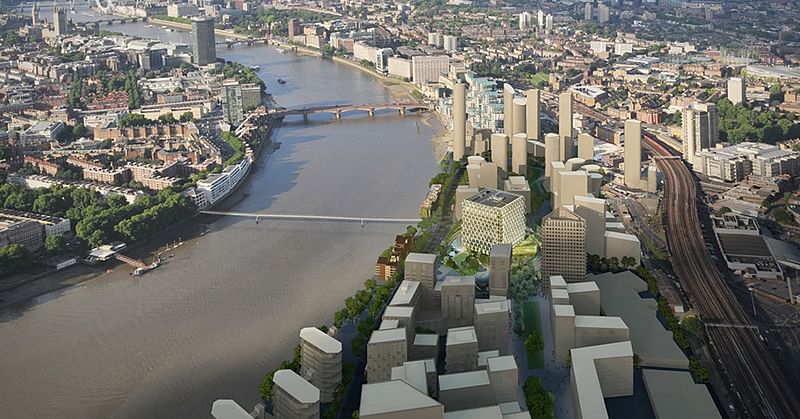
Project data:
Architect: KieranTimberlake
American General Contractor: BL Harbert International, Inc.
UK Major Subcontractor: Sir Robert McAlpine
Site: 4.9 acres
Building Size: approx. 54,000 gross square meters
Images © KieranTimberlake courtesy of U.S. Department of State - Bureau of Overseas Buildings Operations.

Share
0 Comments
Comment as :